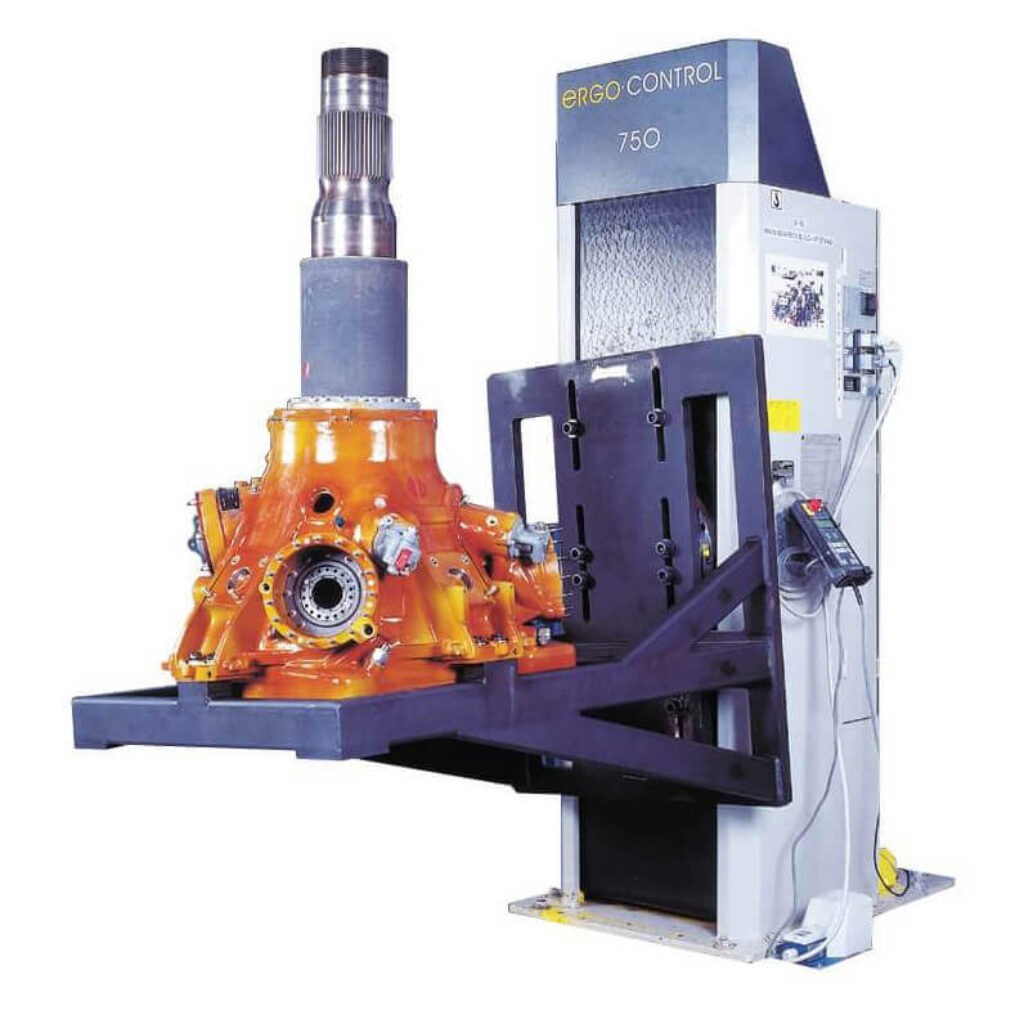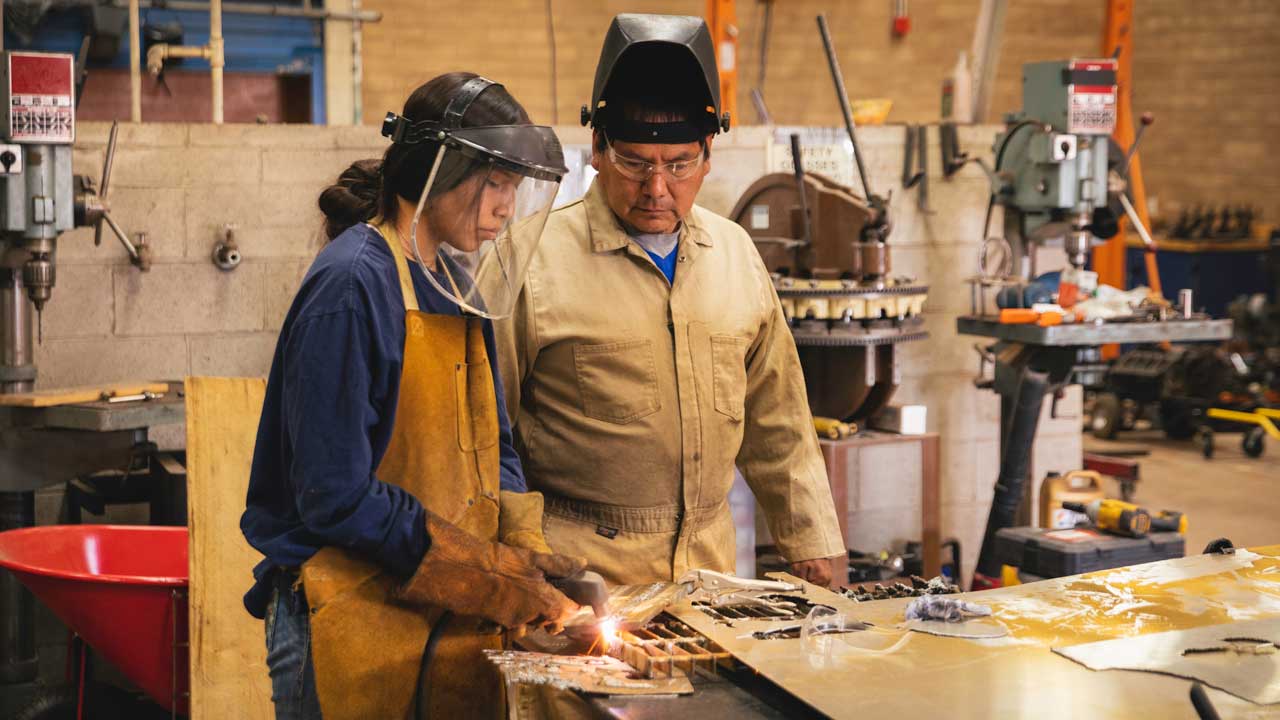Choosing the Right Work Positioning Equipment to Maximize Safety and Efficiency
Selecting the right work positioning equipment for your business ensures that your operations run smoothly and your workforce is protected from potential hazards. At Ergotronix, we believe there is always room for improvement when it comes to workplace safety and operational efficiency.
According to the National Safety Council, overexertion and bodily reaction account for 23% of all workplace accidents. One of the industries most affected is warehousing, with the most frequent injuries are trauma to the back and spine.
To combat this alarming statistic we gathered some key information needed to make informed decisions about work positioning equipment. We aim to help you maximize both safety, efficiency and morale in your industrial environment using work positioning devices.
What Is Work Positioning Equipment?
Work positioning equipment includes a variety of devices designed to securely hold and manipulate workpieces or materials at optimal positions for user access. These devices range from simple manual holders to sophisticated automated systems that can adjust to various heights and angles. The primary goal is to facilitate easier, safer, and more efficient operations by reducing the need for manual handling and positioning of heavy or awkward items.
This equipment is used across numerous industries, including manufacturing, automotive, and construction. By stabilizing or moving objects into a suitable position, these tools help workers perform tasks more effectively without excessive strain or movement. Correctly implementing work positioning equipment can lead to significant productivity improvements and reduced workplace injuries, making them an essential component of modern industrial operations.
What Are the Top Benefits of Work Positioning Equipment?
- Enhanced Safety: Reduces the risk of injuries by minimizing the need for manual lifting and reaching.
- Increased Productivity: Streamlines operations by keeping materials and components within easy reach.
- Improved Worker Comfort: Helps maintain ergonomic working positions, reducing physical strain over long periods.
- Greater Accuracy: Stabilizes workpieces for more precise operations, essential in quality-sensitive tasks.
- Flexibility: Many devices offer adjustable settings to handle different sizes and types of materials.
- Cost-Effectiveness: Reduces labor costs by enabling quicker and more efficient processes.
- Adaptability: This can be integrated into existing workflows with minimal disruption.
Assessing Your Workplace Needs: How To Do It
To correctly assess your workplace’s needs for work positioning equipment, begin by analyzing the tasks that are most physically demanding or pose ergonomic challenges. Look at the frequency and duration of these tasks to determine their impact on workers and productivity. Consider the variety of objects or materials handled and the typical workflow to understand where improvements can be made.
Next, engage with the workers who perform these tasks to gather insights into their challenges and the solutions they might find helpful. This direct feedback is invaluable for identifying specific needs that may not be immediately obvious. Combining this information with data on workplace injuries and efficiency metrics will help paint a comprehensive picture of where to focus your improvements.
Key Features to Look for in Work Positioning Equipment
When selecting work positioning equipment, several key features should be considered to ensure you get the most suitable product. Some of the most important features that you need to consider include:
Load Capacity
Ensure the equipment can handle the maximum weight and size of the materials used in your operations. Selecting equipment that can manage the demands without risking structural integrity is important. Overloading equipment can lead to failures and safety hazards, compromising the entire operation.
Adjustability
Look for equipment that offers flexible settings to accommodate various tasks and worker preferences. Adjustable features such as height, angle, and rotation should be easy to modify to suit different jobs and user requirements. This versatility enhances both usability and functionality in diverse industrial settings.
Ease of Use
Equipment should be intuitive for all users, regardless of their technical skills. Simple controls and clear instructions help reduce training time and minimize operational errors. Ensuring that the equipment is user-friendly can significantly boost productivity and safety.
Ergonomic Design
Choose designs that promote comfortable and natural body positions to prevent strain and injuries. Ergonomically optimized equipment helps to maintain worker health and enhances efficiency by minimizing fatigue. Proper ergonomic design is crucial for long-term sustainability and worker satisfaction.
Safety Features
Prioritize equipment with built-in safety features like emergency stops, lock-in-place mechanisms, and stable bases to prevent accidents. These features are essential for maintaining a safe working environment, especially in settings where heavy or delicate operations occur. Ensuring robust safety measures are in place protects both the workforce and the machinery.
The Role of Ergonomics in Choosing Equipment
Ergonomics plays a pivotal role in selecting work positioning equipment because it directly affects worker comfort and health. Ergonomically designed equipment can significantly reduce the risk of musculoskeletal disorders, which are common in environments where repetitive or strenuous tasks are performed.
Proper ergonomic equipment aligns with the body’s natural movements and adjusts to meet the individual needs of each worker. This customization helps maintain higher levels of productivity and satisfaction among workers. Implementing ergonomic solutions is not just about health; it’s a business strategy that can lead to lower healthcare costs and reduced absenteeism.
Safety Considerations in Work Positioning Equipment
Safety is paramount when integrating any new equipment into your workplace. Work positioning devices should be rigorously tested to meet industry safety standards. It’s crucial to consider the operational environment and ensure that the equipment can perform safely under specific conditions, such as extreme temperatures or in the presence of hazardous materials.
Regular training sessions should be conducted to familiarize workers with the new equipment and update them on any changes in operation procedures. Safety audits and inspections should be scheduled regularly to ensure the equipment remains in good working condition and continues to meet safety standards. Our team can help you create a safe and reliable workplace.
How Work Positioning Equipment Can Boost Your Productivity
Incorporating work positioning equipment can lead to significant productivity gains by reducing the time and effort workers spend on positioning tasks. Efficient positioning speeds up workflows and minimizes the downtime associated with manual setup and adjustments. Furthermore, when workers are less fatigued and the tasks less physically demanding, the quality of work generally improves.
Proper equipment can also help streamline the movement of materials through different stages of production. By reducing bottlenecks and simplifying processes, work positioning devices ensure that projects are completed faster and with fewer errors, directly impacting the bottom line.
Custom Solutions vs. Off-the-Shelf Options: Comparing the Two
When it comes to choosing between custom solutions and off-the-shelf options, several factors need to be considered. A few key examples include:
| Feature | Custom Solutions | Off-The-Shelf Options |
| Adaptability | Tailored To Specific Needs | General Use |
| Cost | Higher Initial Investment | More Cost-Effective in the Long Run |
| Implementation Time | Longer Lead Times Are Needed | Much Faster To Deploy |
| Support | Needs Specific Maintenance Plans | Works With Standard Support |
| Innovation | Uses the Latest Technology | Uses Standard Technology |
| Scalability | Can Be Scaled To Meet Your Needs | Has Limited Scalability |
| Return on Investment | Much Higher Long-Term Benefits | Much Faster Returns |
Maintenance Tips for Longevity and Reliability
- Regular Inspections: Conduct frequent inspections to identify and rectify potential issues before they lead to equipment failure.
- Lubrication: Keep all moving parts well-lubricated to prevent wear and tear and maintain smooth operation.
- Cleaning: Regular cleaning is essential to prevent the buildup of dirt and debris that could interfere with the operation.
- Follow Manufacturer’s Guidelines: Adhere strictly to the maintenance schedule and procedures recommended by the manufacturer.
- Record Keeping: Maintain detailed records of all maintenance activities to track the equipment’s performance and anticipate future needs.
- Replace Parts Promptly: Replace worn or damaged parts immediately to keep the equipment in optimal condition.
- Training: Ensure that all personnel responsible for maintenance are properly trained and aware of the latest techniques and materials.
How an Expert Can Help You Find the Right Product To Meet Your Needs
An expert in work positioning equipment can provide invaluable assistance in selecting the right products for your specific needs. They can analyze your current operations, identify areas for improvement, and recommend solutions that align with your business objectives.
Experts also offer insights into the latest advancements in technology and ergonomics, ensuring that your investment is future-proof. Their experience can help you avoid common pitfalls and ensure that the equipment you choose offers the best possible return on investment. Consulting with a specialist can also provide peace of mind that all safety and efficiency aspects have been thoroughly considered.
Ergotronix Can Help You Find the Right Work Positioning Devices To Meet Your Needs
Ergotronix is committed to helping you find the ideal work positioning solutions to enhance both safety and efficiency in your workplace. Our team of experts is ready to guide you through the selection process, from assessing your needs to installing and maintaining your equipment. Whether you need a customized work positioner, a reliable lift, a durable transporting cart, or versatile conveyor rollers, we can help you. Contact us today to learn how our tailored solutions can improve your operations and safeguard your employees.





